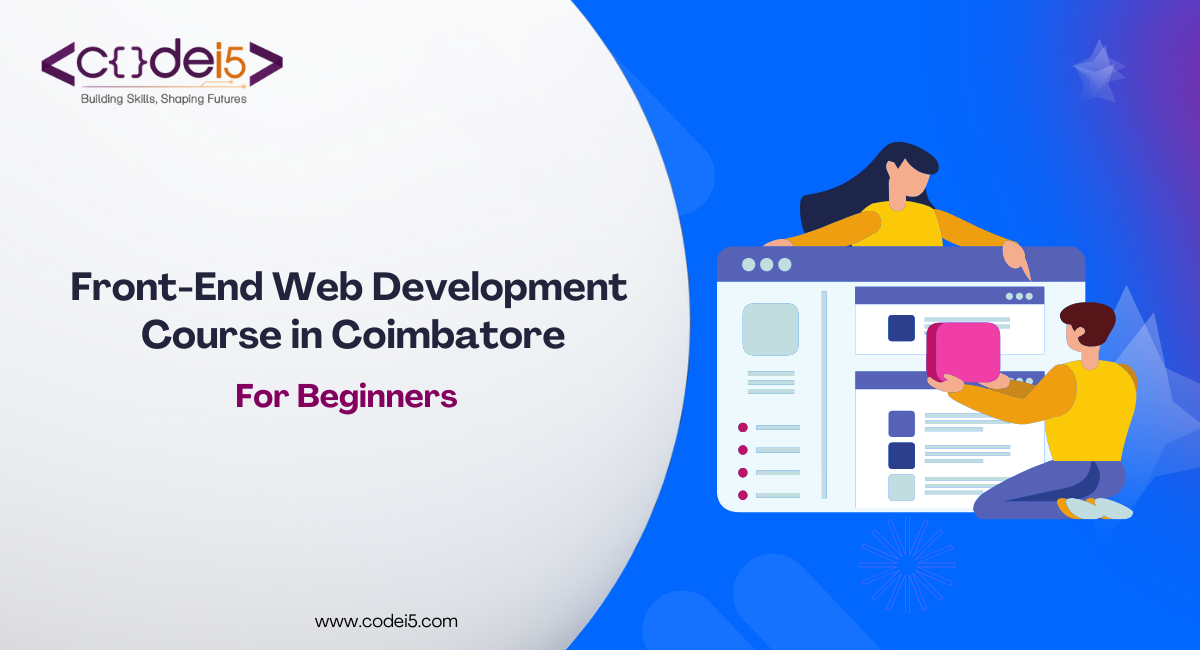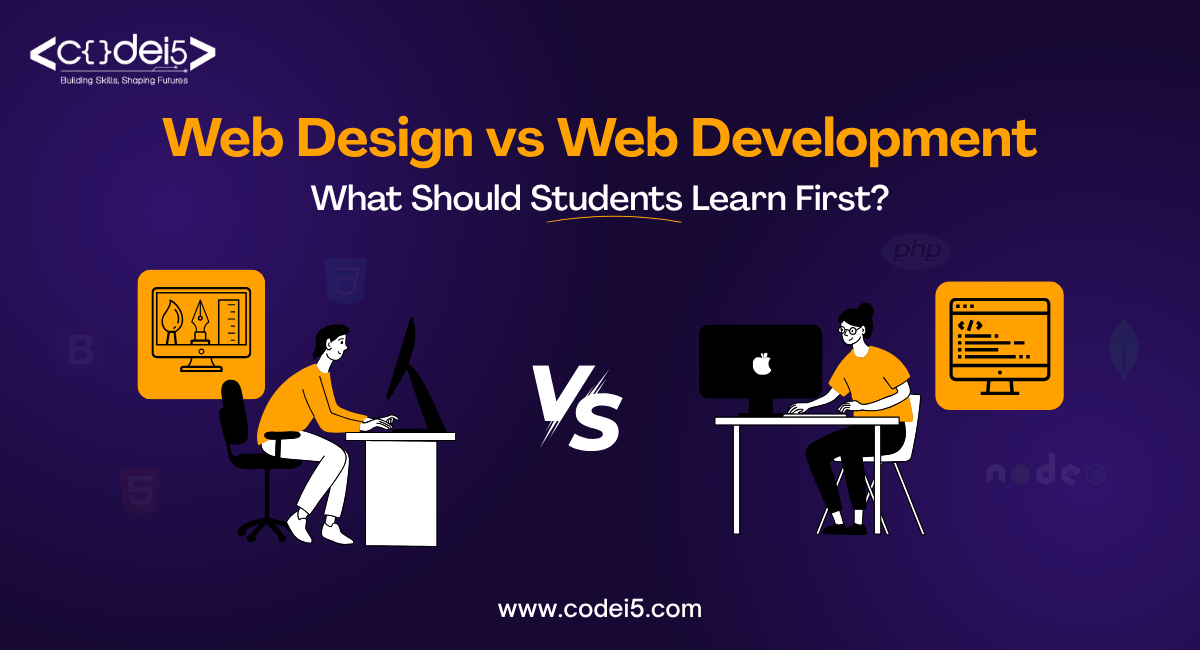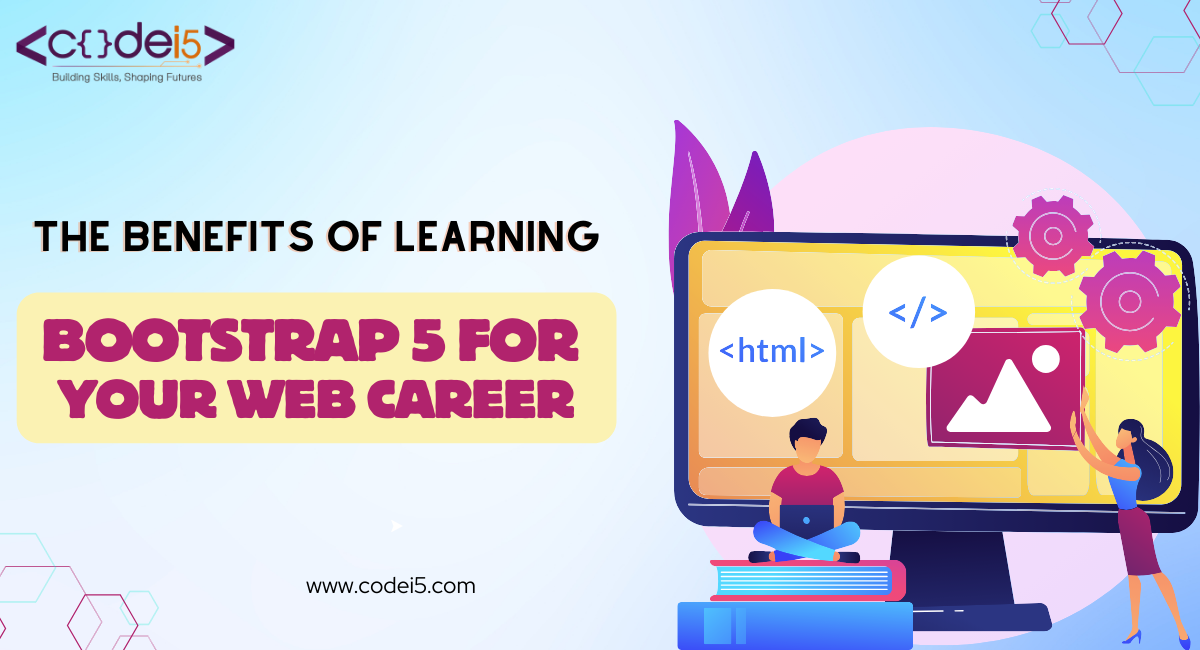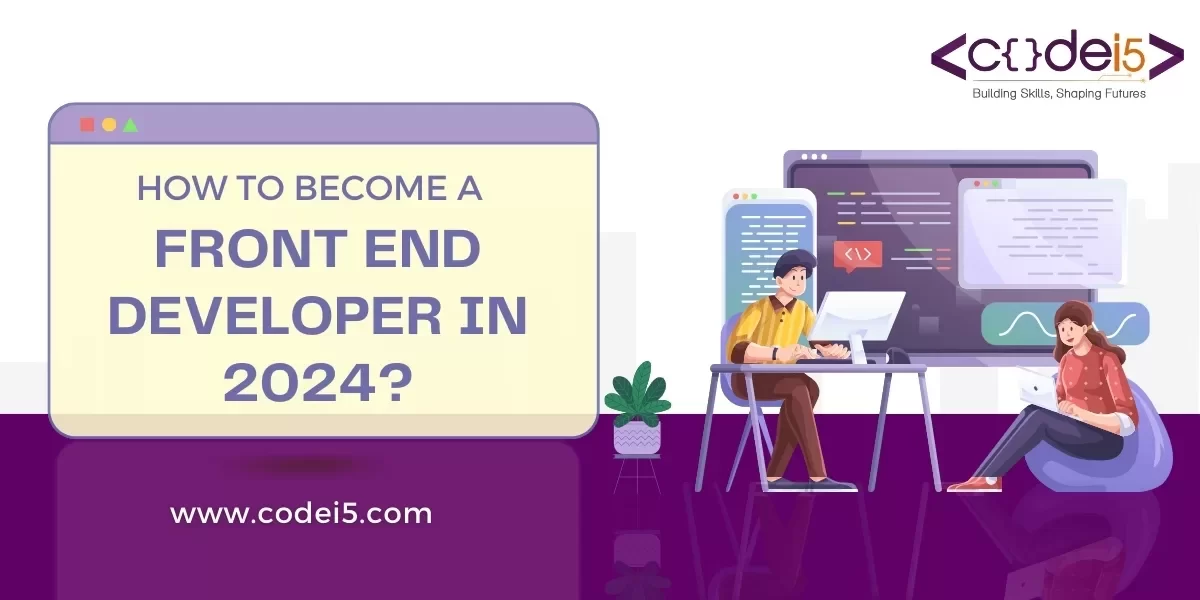
1. Introduction to Front-End Web Development
Front-end web development is about creating the parts of a website that users see and interact with. It includes the design, layout, and features like buttons, images, and menus. To build these, developers use HTML, CSS, and JavaScript.
If you’re new to web development and looking for a Front-End Web Development Course in Coimbatore for freshers, this course will teach you how to build beautiful, interactive websites. You’ll learn everything from the basics of HTML to making your website responsive on different devices.
A strong understanding of front-end development is essential because it helps ensure users have a smooth, enjoyable experience when visiting your website.
2. Setting Up the Development Environment
To start building websites, you need to set up a development environment on your computer. This includes the tools and software you’ll use to write and test your code.
In a Front-End Web Development Course in Coimbatore for Freshers, you will learn how to set up the right environment to start coding efficiently. Here are the key steps:
- Install a Text Editor: Learn to use popular code editors like VS Code or Sublime Text for writing your code.
- Set Up Browsers for Testing: Set up browsers like Google Chrome to test your websites and use developer tools for debugging.
- Learn Browser Developer Tools: Get familiar with built-in browser tools to inspect and troubleshoot your website.
3. HTML: Building the Structure
HTML (HyperText Markup Language) is the backbone of every website. It tells the web browser how to display content like text, images, links, and forms. Without HTML, a webpage wouldn’t exist.
In a Front-End Web Development Course in Coimbatore for Freshers, you’ll dive into HTML to learn how to create and organize web pages. Here’s a deeper look at what you’ll cover:
- Understanding HTML Basics: You’ll learn how HTML uses “tags” to create the structure of a webpage. Tags are simple codes like <html>, <head>, and <body> that tell the browser what content to display and how to display it.
- Creating HTML Documents: You’ll start by writing basic HTML documents. This includes setting up the necessary structure and adding content to the webpage using proper HTML syntax.
- Key HTML Tags: You’ll get familiar with essential HTML tags:
- Headings (<h1>, <h2>, etc.) for titles and subheadings.
- Paragraphs (<p>) for text content.
- Links (<a>) to connect to other pages or external websites.
- Lists (<ul>, <ol>) for unordered or ordered lists.
- Images (<img>) to display pictures.
- HTML Forms: Forms are important for gathering data from users, like registration or contact forms. You’ll learn how to create forms with fields like text boxes, checkboxes, and buttons using <form>, <input>, and <button> tags.
Once you understand HTML, you’ll be able to build the core structure of any website. This is the first step toward creating interactive and well-designed web pages!
4. CSS: Styling Your Website
CSS (Cascading Style Sheets) is used to control the appearance of a website. It defines how HTML elements should look, including their colors, fonts, layouts, and spacing.
In a Front-End Web Development Course in Coimbatore for Freshers, you’ll learn how to make websites visually appealing. Here’s what you’ll cover:
- CSS Basics: Learn how to link CSS to HTML and apply styles to elements using selectors.
- Styling Text and Fonts: Change font styles, sizes, and colors to make text look better.
- Layout Techniques: Learn how to create layouts using Flexbox and Grid to arrange elements on the page.
- Responsive Design: Use media queries to make your website adapt to different screen sizes, ensuring it looks good on both mobile and desktop devices.
CSS is what makes your website attractive and user-friendly.
5. JavaScript: Adding Interactivity
JavaScript is a programming language that brings your website to life by adding interactivity and dynamic behavior. It allows you to create features like pop-up windows, animations, interactive forms, and much more.
You’ll learn how to make your website interactive by using JavaScript. You’ll understand how to write simple JavaScript code, respond to user actions like clicks or key presses, and update the content of your website dynamically. JavaScript makes your website not just a static page, but an engaging, interactive experience for users.
6. Version Control with Git and GitHub
Version control helps you keep track of changes in your code and collaborate with others. Git is the tool used to manage changes, and GitHub is a platform to store and share your code.
In a Front-End Web Development Course in Coimbatore for Freshers, you’ll learn how to use Git and GitHub. You’ll understand how to track changes in your code using commands like git init, git add, and git commit, and how to share your work with others through GitHub. You’ll also learn how to push and pull code to/from GitHub to collaborate effectively with other developers.
7. Responsive Design
Responsive design ensures that your website looks great and functions well on all devices, including desktops, tablets, and smartphones. It allows the layout and content of your website to adjust to different screen sizes, so users have an optimal experience no matter how they access the site.
In a Front-End Web Development Course, you’ll learn how to design websites that automatically adapt to various screen sizes using techniques like fluid grids and media queries. This means your website will be user-friendly, whether viewed on a large desktop monitor or a small mobile screen.
Responsive design is essential in today’s world, where people use a variety of devices to access the web, and it ensures your site looks professional and works smoothly across all platforms.
8. Introduction to Front-End Frameworks (Optional)
- What are Front-End Frameworks?
Front-end frameworks are pre-written collections of code that help speed up web development. They provide a structured way to build websites without having to write every component from scratch. - Popular Frameworks
Some of the most popular front-end frameworks include Bootstrap, Foundation, and Tailwind CSS. These frameworks offer a set of tools and guidelines to make web development easier and faster. - Pre-Styled Components
These frameworks come with pre-designed components such as buttons, navigation bars, forms, and grids, which you can use right out of the box. This helps you create professional-looking designs without needing advanced CSS skills. - Faster Development
By using front-end frameworks, you can save time and effort on repetitive tasks. The framework provides predefined styles and layouts, so you don’t have to start from scratch with every project. - Responsive Design
Most front-end frameworks, like Bootstrap, come with built-in responsive features. This ensures that your website adapts to different screen sizes and looks great on all devices, from desktops to smartphones. - Efficient Workflow
With a front-end framework, you can focus on the unique aspects of your project, as the framework handles many of the standard design elements and functionality. This leads to a more efficient and organized development process.
These explanations now cover both Responsive Design and Introduction to Front-End Frameworks with clear and simple descriptions.
8. Introduction to Front-End Frameworks (Optional)
- What are Front-End Frameworks?
Front-end frameworks are pre-written collections of code that help speed up web development. They provide a structured way to build websites without having to write every component from scratch. - Popular Frameworks
Some of the most popular front-end frameworks include Bootstrap, Foundation, and Tailwind CSS. These frameworks offer a set of tools and guidelines to make web development easier and faster. - Pre-Styled Components
These frameworks come with pre-designed components such as buttons, navigation bars, forms, and grids, which you can use right out of the box. This helps you create professional-looking designs without needing advanced CSS skills. - Faster Development
By using front-end frameworks in your Front-End Web Development Course in Coimbatore for Freshers, you can save time and effort on repetitive tasks. The framework provides predefined styles and layouts, so you don’t have to start from scratch with every project. - Responsive Design
Most front-end frameworks, like Bootstrap, come with built-in responsive features. This ensures that your website adapts to different screen sizes and looks great on all devices, from desktops to smartphones. - Efficient Workflow
With a front-end framework, you can focus on the unique aspects of your project, as the framework handles many of the standard design elements and functionality. This leads to a more efficient and organized development process, especially for freshers taking a Front-End Web Development Course in Coimbatore.
9. Deploying Your Website
Once you’ve built your website, it’s time to make it live on the internet. Deploying your website means uploading it to a server so people can access it from anywhere.
In a Front-End Web Development Course, you’ll learn how to deploy your website using platforms like GitHub Pages, Netlify, or Vercel. These platforms allow you to easily upload and host your website for free. You’ll also learn how to share the website’s URL with others, so anyone can visit your site online.
10. Best Practices for Front-End Development
Best practices are essential for writing clean, efficient, and maintainable code. These practices help you create websites that are easy to understand and work well across all devices.
In this section, you’ll learn how to:
- Write clean code that is easy to read and understand.
- Make your website accessible to people with disabilities.
- Optimize your website’s performance to load faster.
- Follow SEO (Search Engine Optimization) basics to help your site rank better on search engines.
Using best practices ensures that your websites are high-quality, user-friendly, and work well in the long term.
Conclusion
In conclusion, learning front-end web development helps you create interactive and visually appealing websites. By mastering HTML, CSS, JavaScript, and responsive design, you’ll be ready to start building your own projects. Codie5 Academy in Coimbatore offers a great Front-End Web Development Course for Freshers, helping you gain the skills needed to begin your career in web development. Whether you’re just starting out or looking to improve, Codie5 Academy is the perfect place to learn and grow as a developer.






